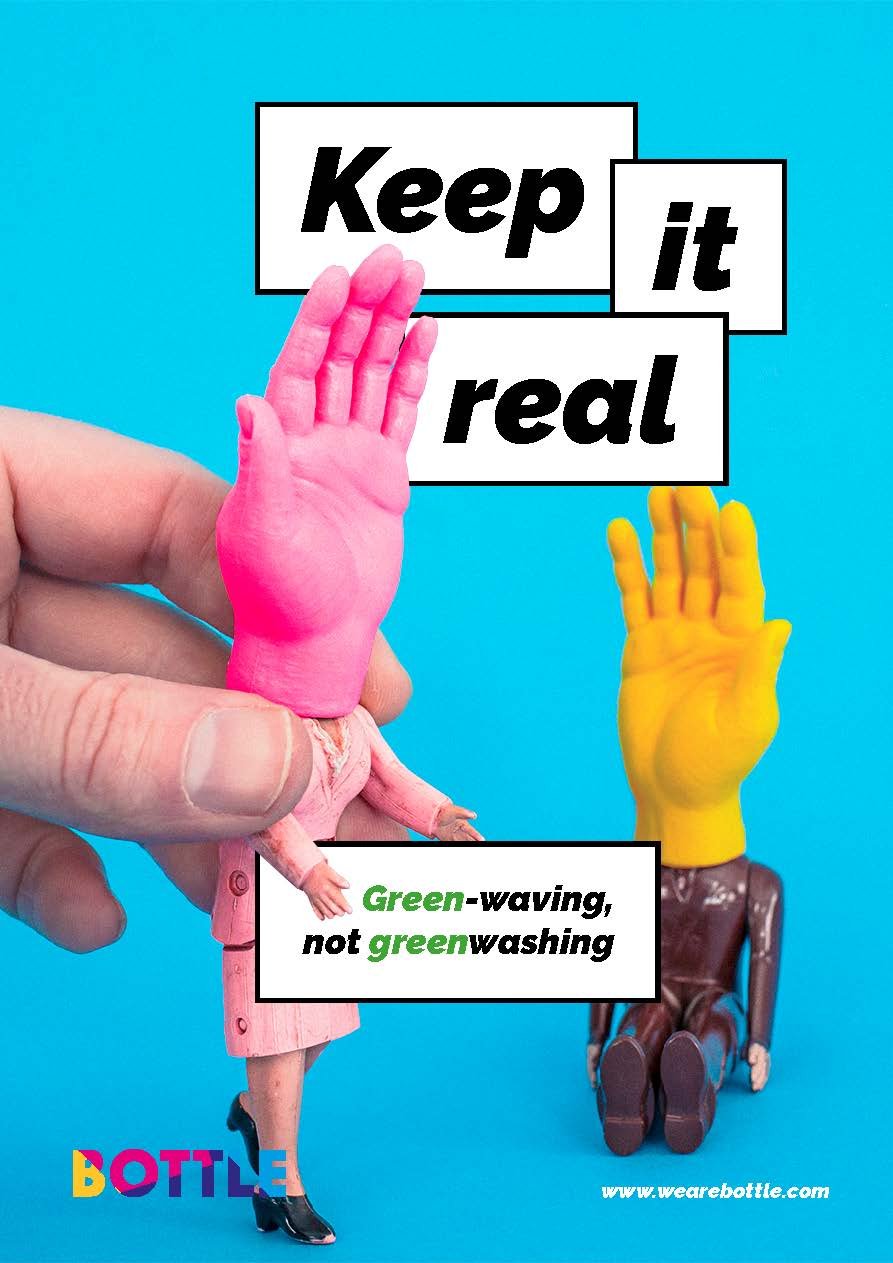
5 Tips for Brands to Avoid Greenwashing
Let’s start with… what is greenwashing?
Greenwashing describes when a brand makes a statement that implies, they are making something sustainable, eco-friendly, or green, when the reality is, the rest of the business is well, anything but.
As big-brand names are increasingly being chastised for greenwashing (not only by the ASA, but by consumers too), the apprehension marketers - as they plan to launch their latest eco campaign, partnership, or activation - is very real.
So, what does need to be considered before any sustainability comms are put out there?
1. Bold Humility
(brand authenticity)
When talking about your brand, it can be difficult to publicly share the areas you may be lacking. However, when it comes to sustainability, honesty really is the best policy.
You will be seen as far more authentic if you talk openly about the areas where you may not be the best at sustainably measures… just yet. But giving visibility on how you are planning to make positive moves, in line with best environmental practices, because you want to continue do-good for the future, has real value.
What does this approach tell your target audience? Well, it shows that you have nothing to hide, you’re simply trying to do better, and you are not in the market of making bold, false claims.
This green journey of yours would look good as an onsite content hub, that you regularly update as you implement more for the greater good. And what a great destination for journos to link back to for your offsite stories.
2. Green-Doing (your brands sustainability pledge)
Big stunt-like PR campaigns showing off flash-in-the-pan sustainability efforts are, sometimes, tone-deaf in the eyes of the consumer.
As a brand you really should be working towards more long-term sustainability commitments.
Telling honest and more subtle stories around these ongoing goals – where the brand is not the hero, but the green measure is - are a better way of showcasing that your brand really is invested in supporting action against climate change.
Solution-storytelling – informative, helpful-to- the-audience, an educative how-to style may be the best skew for the comms plan.
3. Generous Kinships (brand and product collaborations)
Sometimes, two is better than one, especially when there is a non-competitive (but rather complimentary) brand who share the same values as you. Together, you can create quite the force.
And, because we’re in the world of digital PR, like any smart tie-up, the chances of organically reaching a wider audience, are even greater.
The simplest form of eco-endorsement could be a simple shout-out to other brands you admire. And at the other end of the spectrum… embarking on a partnership with longevity to create a product, or even build a dedicated space to immerse your consumers in.
Well-chosen kinships, with quirky collabs, add to fame-making media coverage opportunities.
4. A Signature Focus (your brand sustainability mission)
Rightly, any brands’ sustainability mission statements, policies and manifestos will span across a range of factors in the product development cycle; from carbon emissions, recyclability, packaging materials, responsible sourcing, energy, biodiversity, and general environmental impact.
Stories around this kind of real work, that you as a business are actioning behind the scenes, should live on your brands website.
Your research and learnings through the process, can be shared educational content onsite.
For on-page share informative pieces starting from the light-touch (for those who just want a quick validation of your credentials), through to longer-form (for those who are keen to learn much more).
But be specific and focus on one of the topics so you become an expert in that area of sustainability, in the eyes of the audience.
5. Earn Authority (brand endorsements and influencer partners)
Another way to avert the risk of greenwashing is earning authority through strong brand endorsements.
And go beyond just one ‘brand ambassador’, over time work on building a collective of green cheerleaders. From influencers across different, audience-relevant social media platforms, to authoritative partners, charities and organisations.
The best partnerships to promote sustainability values is with those who are well respected within the sustainability sector. They can offer their endorsement amongst their followers for your brands’ sustainability efforts, to help squash any potential misleading environmental claims.
This group will help earn visibility and brand authority when it comes to environmental practises.
We’ve got even more to say on how brands communicate their sustainability efforts, and how this can make for an effective digital PR strategy. We looked at a number of leading brands in the Food & Drink sector, measuring their success in telling sustainability stories, as well as their performance in answering the queries people ask in search, and the strength of their onsite sustainability content. Download the full report below.






